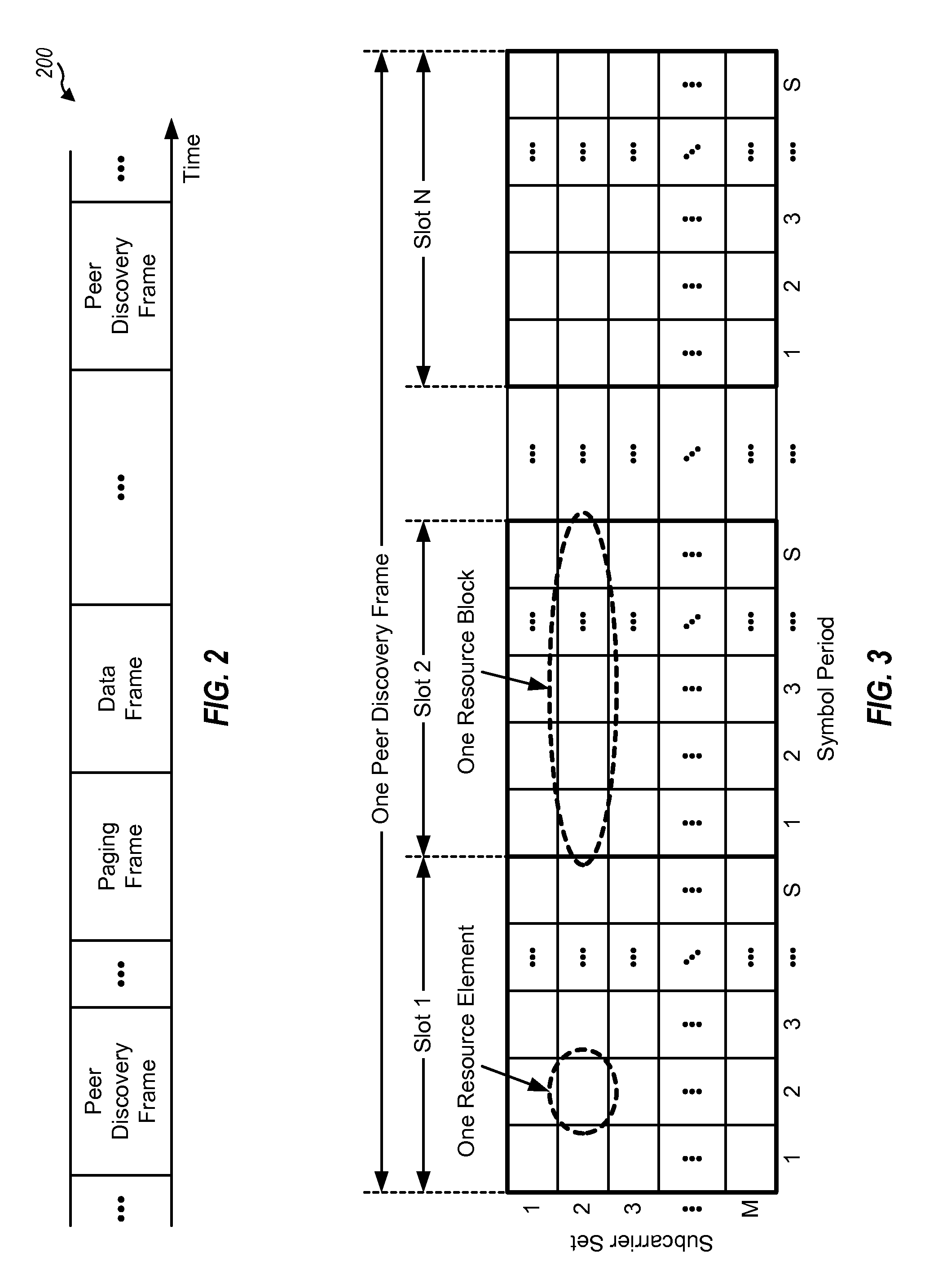Transmission with collision detection and mitigation for wireless communication
a wireless communication and collision detection technology, applied in the field of communication, can solve problems such as signal interference with one another, and achieve the effect of high interferen
- Summary
- Abstract
- Description
- Claims
- Application Information
AI Technical Summary
Benefits of technology
Problems solved by technology
Method used
Image
Examples
Embodiment Construction
[0021]The transmission techniques described herein may be used for various wireless communication networks such as WWANs, WMANs, WLANs, etc. The terms “network” and “system” are often used interchangeably. A WWAN may be a Code Division Multiple Access (CDMA) network, a Time Division Multiple Access (TDMA) network, a Frequency Division Multiple Access (FDMA) network, an Orthogonal FDMA (OFDMA) network, a Single-Carrier FDMA (SC-FDMA) network, etc. A CDMA network may implement a radio technology such as Universal Terrestrial Radio Access (UTRA), cdma2000, etc. A TDMA network may implement a radio technology such as Global System for Mobile Communications (GSM). An OFDMA network may implement a radio technology such as Evolved UTRA (E-UTRA), Ultra Mobile Broadband (UMB), Flash-OFDM®, etc. Long Term Evolution (LTE) is an upcoming release of “3rd Generation Partnership Project” (3GPP) that uses E-UTRA, which employs OFDMA on the downlink and SC-FDMA on the uplink. A WLAN may implement on...
PUM
 Login to View More
Login to View More Abstract
Description
Claims
Application Information
 Login to View More
Login to View More - R&D
- Intellectual Property
- Life Sciences
- Materials
- Tech Scout
- Unparalleled Data Quality
- Higher Quality Content
- 60% Fewer Hallucinations
Browse by: Latest US Patents, China's latest patents, Technical Efficacy Thesaurus, Application Domain, Technology Topic, Popular Technical Reports.
© 2025 PatSnap. All rights reserved.Legal|Privacy policy|Modern Slavery Act Transparency Statement|Sitemap|About US| Contact US: help@patsnap.com



